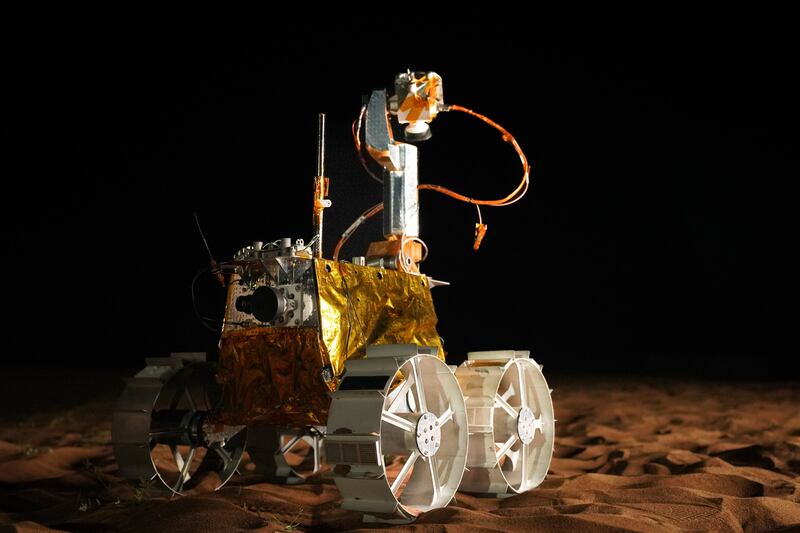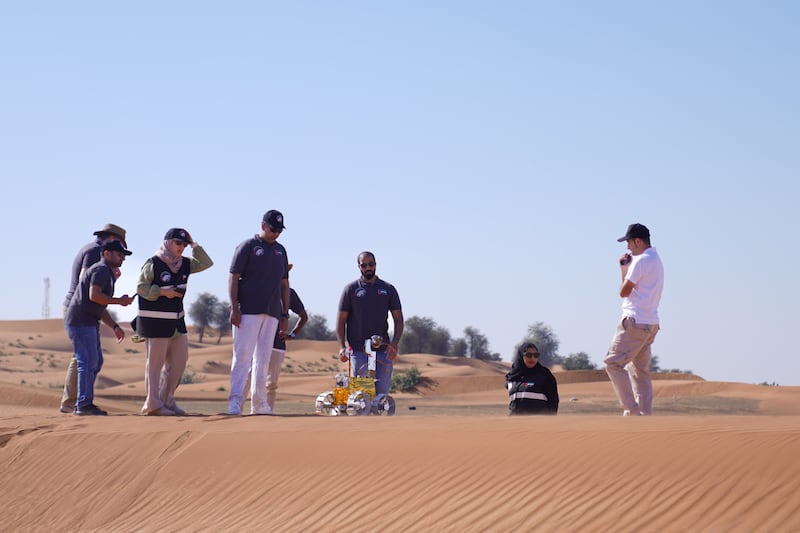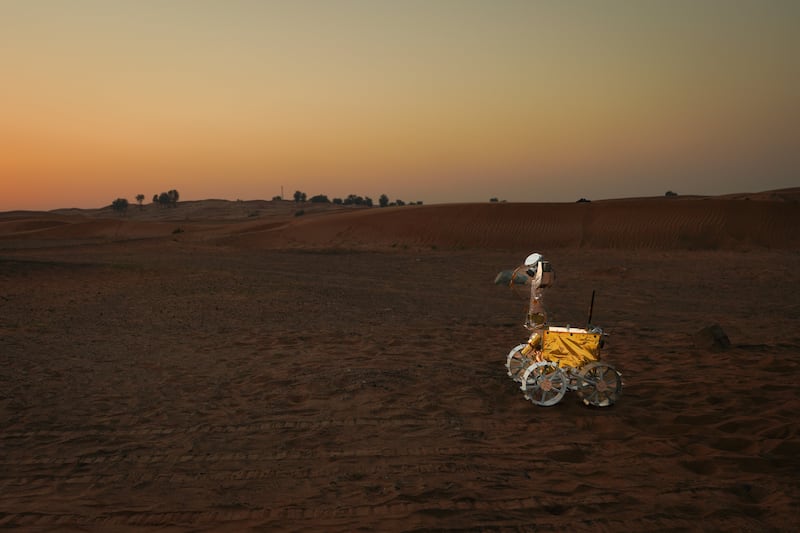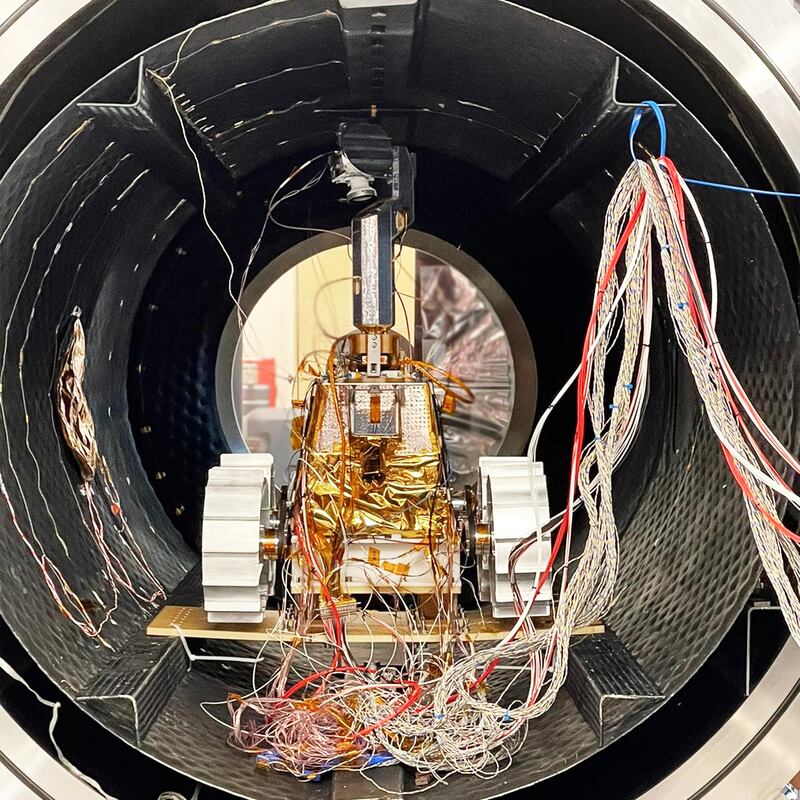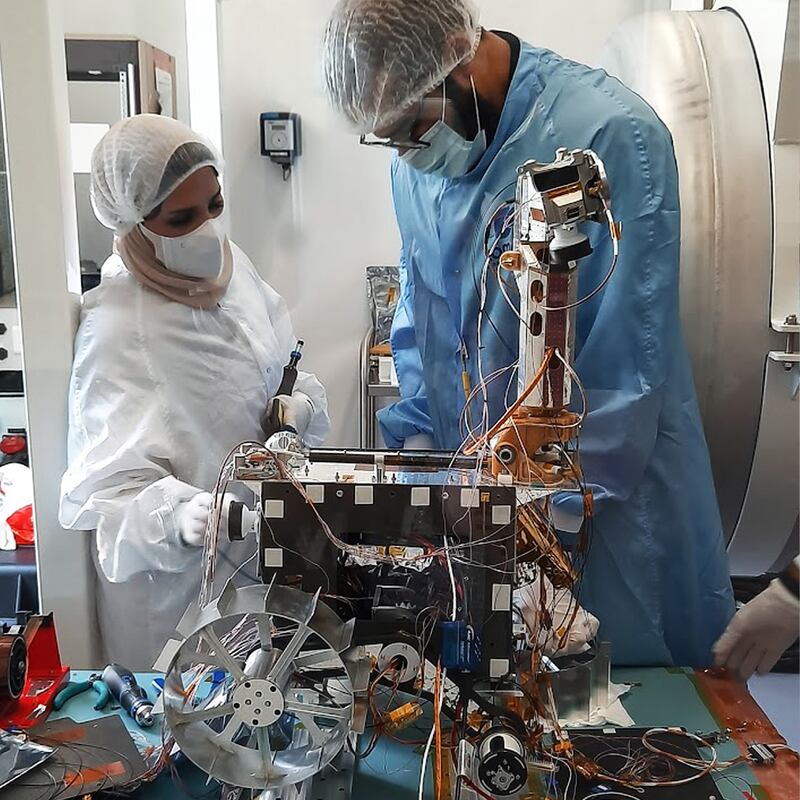The UAE is testing its Moon rover Rashid in the remote desert areas of Dubai, to check if it operates as planned, before its eagerly awaited launch later this year.
A video released by the Dubai Media Office shows the tiny 10-kilogram robotic rover tilting as it negotiates the sand dunes.
Recent field tests included monitoring the rover's mobility and communication systems.
The four-wheeled rover can climb over obstacles up to 10 centimetres tall and descend a 20-degree slope, at speeds of 10cm per second.
“The Rashid Rover was tested in the desert by the Emirates Lunar Mission team in preparation for the first Arab mission to the Moon's surface,” the Dubai Media Office tweeted on Wednesday.
“The rover will study the lunar soil in an unexplored area during its mission.”
UAE tests Rashid rover before lunar mission
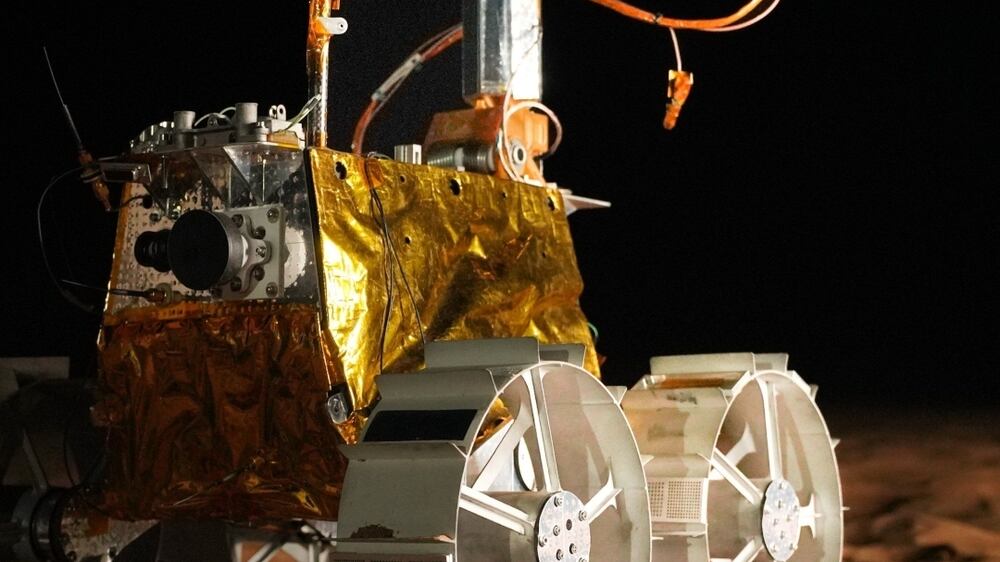
Japanese lander Hakuto-R, built by private company iSpace, is going to carry the Rashid rover to the lunar surface.
The mission will lift-off into space on SpaceX’s Falcon 9 rocket, from Florida’s Kennedy Space Centre, during a launch window that starts in October.
Rashid will explore the near side of the Moon, which offers a smoother surface with fewer craters, but the terrain is still unpredictable.
It will land on a site known as the Lacus Somniorum, a Latin phrase that translates to ‘Lake of Dreams’.
It is the primary landing site, with three other spots selected as alternatives as a precautionary measure.
Some basins on the near side of the Moon are so steep that, were the rover to fall into one, it would be impossible for it to climb out.
Lacus Somniorum will be interesting to study because the surface has a unique composition. It was formed by flows of basaltic lava, giving it a reddish hue.
Some of the scientific goals behind the mission include studying lunar soil, the geology of the Moon, dust movement and investigating the Moon's photoelectron sheath for one lunar day — about two weeks on Earth.
